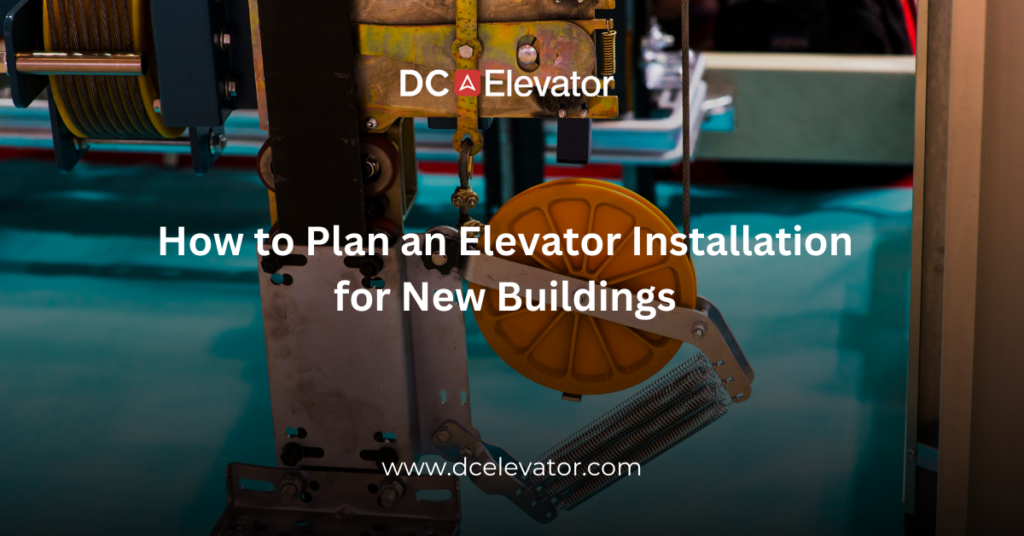Planning an elevator installation for new buildings is a critical aspect of construction that impacts functionality, safety, and future use. An effective installation plan ensures that elevators meet the needs of the building’s occupants and operate efficiently. In this blog post, we’ll cover essential steps and considerations for planning a successful elevator installation.
Why Proper Planning is Crucial
Proper planning for elevator installation is essential to:
- Maximize Efficiency: Ensure that the elevator meets the building’s traffic needs and integrates seamlessly with other systems.
- Ensure Safety: Comply with building codes and safety regulations to provide a safe environment for users.
- Optimize Space: Make the best use of available space and ensure the elevator fits well within the building’s design.
- Enhance User Experience: Provide a smooth and reliable service that meets the expectations of the building’s occupants.
Key Steps in Planning Elevator Installation
1. Assess Building Requirements
Start by assessing the specific needs of the building, including:
- Traffic Analysis: Estimate the number of users and the frequency of elevator use. This helps determine the appropriate size and capacity of the elevator.
- Building Layout: Consider the building’s design and layout to ensure the elevator fits well within the available space and integrates with other features.
2. Choose the Right Type of Elevator
Select the type of elevator that best suits the building’s requirements:
- Passenger Elevators: Ideal for transporting people between floors.
- Freight Elevators: Designed for moving goods and heavy loads.
- Service Elevators: Used for transporting maintenance staff and equipment.
3. Determine Elevator Specifications
Specify key elevator features based on the building’s needs:
- Capacity: Choose an elevator with the appropriate load capacity to handle peak traffic.
- Speed: Determine the elevator speed based on the building’s height and expected usage.
- Design: Select design elements that complement the building’s aesthetics and functionality.
4. Plan the Location
Carefully plan the elevator’s location within the building:
- Shaft Placement: Decide on the location of the elevator shaft to optimize space and accessibility.
- Lobby and Access Areas: Ensure there is adequate space for elevator lobbies and access areas to facilitate smooth operation and user flow.
5. Compliance with Codes and Regulations
Ensure that the elevator installation complies with relevant building codes and safety regulations:
- Accessibility Standards: Adhere to regulations such as the Americans with Disabilities Act (ADA) to ensure the elevator is accessible to all users.
- Safety Codes: Follow safety codes to ensure that the elevator is safe for operation and maintenance.
6. Consider Future Needs
Plan for future needs and potential upgrades:
- Capacity for Expansion: Choose an elevator system that can accommodate future increases in traffic if the building’s use changes or expands.
- Technology Upgrades: Consider future-proofing the installation with technology that allows for easy upgrades.
7. Select a Qualified Contractor
Choose a reputable contractor with experience in elevator installation:
- Experience: Look for contractors with a proven track record in installing elevators in similar types of buildings.
- Certification: Ensure the contractor is certified and adheres to industry standards.
8. Coordinate with Other Trades
Coordinate the elevator installation with other trades and construction activities:
- Integration: Ensure that the elevator system integrates well with other building systems, such as electrical and fire safety systems.
- Timing: Schedule the installation to avoid conflicts with other construction activities and ensure a smooth process.
9. Testing and Inspection
Once installed, the elevator should undergo thorough testing and inspection:
- Operational Testing: Test the elevator’s operation to ensure it functions correctly and meets performance standards.
- Safety Inspection: Conduct a safety inspection to verify that all safety features are in place and functioning properly.
10. Maintenance Planning
Plan for ongoing maintenance to keep the elevator in good working condition:
- Maintenance Schedule: Establish a regular maintenance schedule to address any issues and ensure the elevator operates reliably.
- Service Agreements: Consider service agreements with qualified technicians to handle routine maintenance and emergency repairs.
Conclusion
Planning an elevator installation for new buildings involves careful consideration of various factors, including building requirements, elevator specifications, and compliance with regulations. By following these steps and working with experienced professionals, you can ensure a successful installation that enhances the building’s functionality, safety, and user experience. Proper planning sets the foundation for a well-integrated elevator system that serves the needs of occupants effectively and efficiently.
